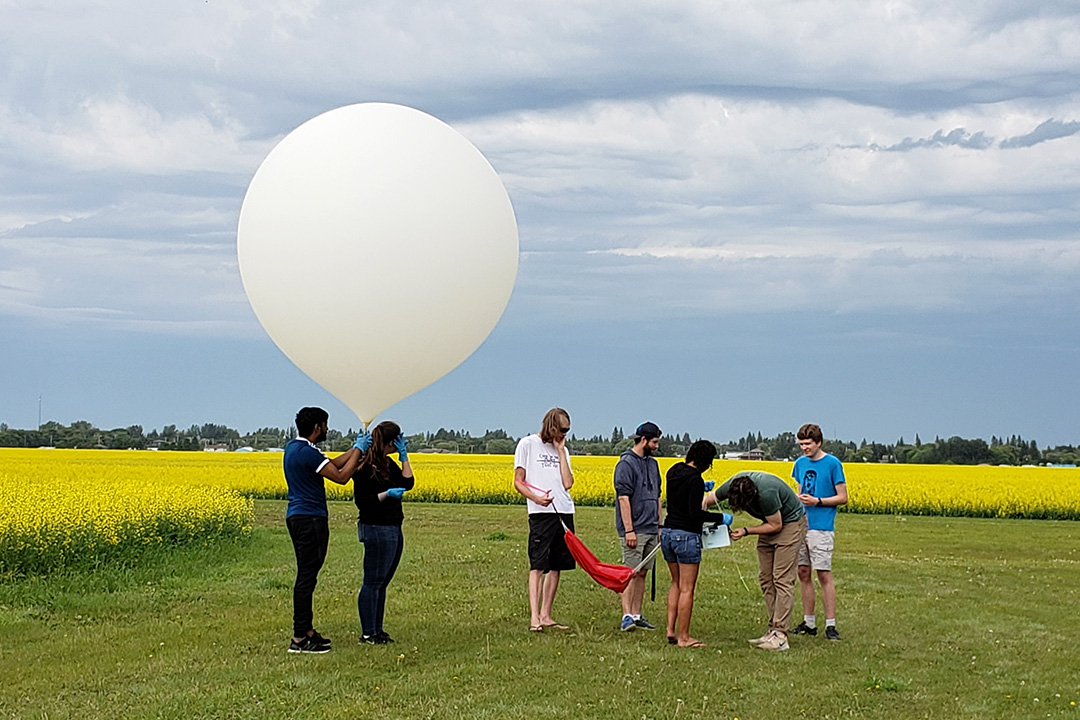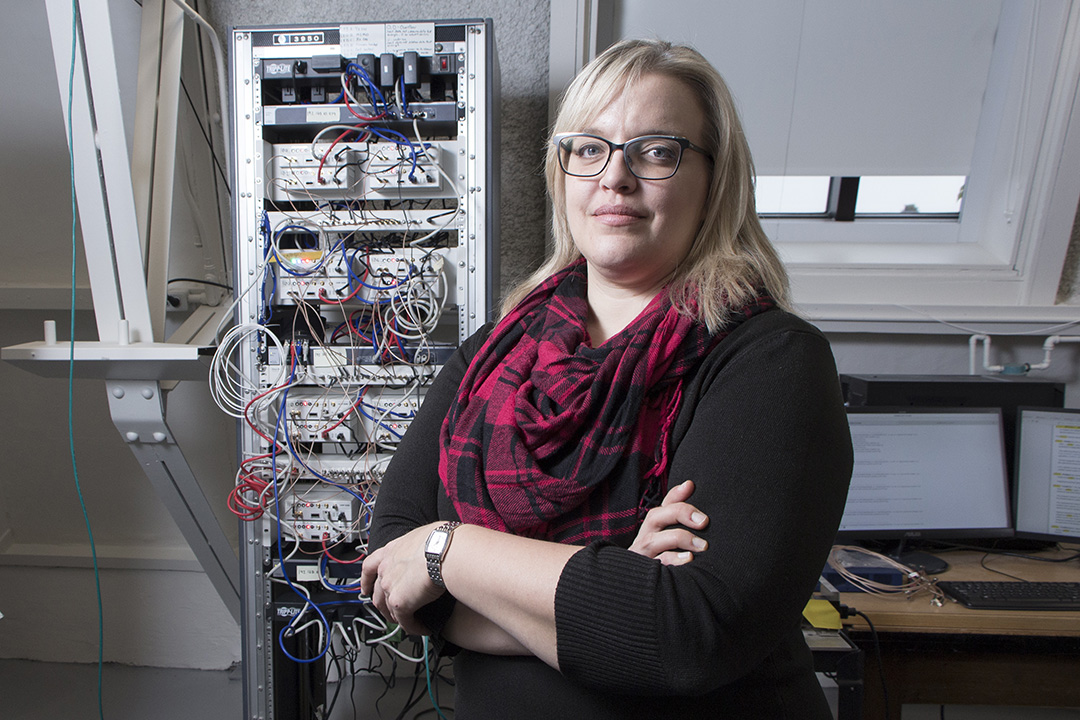
Space: Final frontier for USask students
When you’re studying outer space, it helps to broaden your horizons.
By HenryTye GlazebrookAt least according to Dr. Kathryn McWilliams (PhD), a University of Saskatchewan (USask) professor of physics and engineering physics, who leads a master’s degree program aimed at giving students the tools they need to research—and maybe one day even explore—beyond the furthest reaches of Earth’s atmosphere.
“We have students in their thesis research who are using zero gravity plane flights. They take off and go up and down and up and down, so you can test how things work in zero gravity,” McWilliams said. “The sky is not the limit.”
The International Space Mission Training Program (ISM) began three years ago as a collaborative effort between Canada and Norway and is funded through a $1.65 million grant over six years from the Natural Sciences and Engineering Research Council of Canada’s CREATE Program, and an additional $1.3 million in partner contributions.

The graduate program is a natural extension of the Canada-Norway Student Sounding Rocket Program (CaNoRock), which since 2012 has offered USask students a weeklong experience building and launching rockets in Norway. ISM offers those same students and others like them a more intensive and extensive opportunity to pursue their interest in space physics and engineering and put it to practical educational use.
“In the master’s-level course, they spend a whole term doing research and trying to understand how the rocket or balloon or satellite systems work, and then they have more time to design new things and implement new technologies and new computer code,” McWilliams said. “They’re often writing control programs for the sensors that they’re putting on their payload.
“They have a couple of weeks to get things working and then launch it and analyze the data that comes back. It’s higher risk at the master’s level and it demands more from them, but that’s appropriate for that level of training and they just love it so far.”
In July, four USask graduates students in the program were part of an international team that launched a research balloon 30 kilometres into near space, from the Cudworth Airport outside of Saskatoon, in a project designed to measure cosmic rays and to study the effect on satellite communications and to better protect astronauts.
Although the focus is currently aimed at thesis-based research and hands-on space mission and professional skill building, McWilliams hopes that the program’s success will pave the way for a joint degree program between USask, the University of Calgary and the University of Oslo. If successful, the overarching goal is to provide students with the privilege of taking the lead on an operational Canadian-Norwegian space mission by 2025.
“This program gives a special opportunity to the students involved in rocket science at the university, and they are often among the top students at the university,” she said. “It’s so fabulous to be able to give these students a chance to do something that they wouldn’t get to do elsewhere or through another program.”
It’s a lofty goal, but one that McWilliams believes is of utmost importance, given the growing relevance of space technologies in the modern world.
“We rely on space-based technology do so many things—Internet, cell phones, GPS navigation, online banking—all that stuff and then some, relies on space technology,” she said. “We need people with those skills.”

